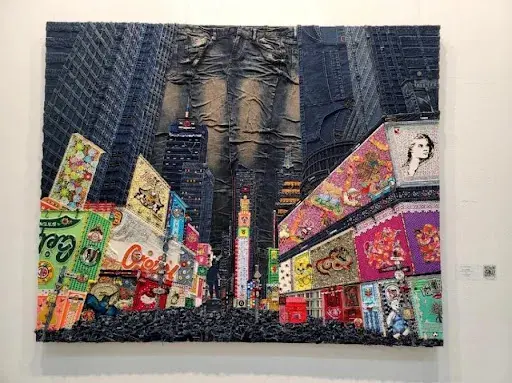Korean Art History: How Did Korean Modern Art Emerge Before Appearing on the World Stage?
A column that helps you understand Korean art
Korean art reached an inflection point in the 1970s after the Japanese colonial era and the Korean War. At that time, Korea was dominated by the accelerated state-led industrialization and oppressive social atmosphere, unlike the Western countries, such as the ‘68 Revolution and the opposition to the Vietnam War. At this time, Korean art became more concerned about its identity. In particular, a collective movement called ‘monochromatic painting’ appeared, especially among young artists. They dealt with fundamental questions about existence, not about reproduction. Accordingly, they made harmony with nature a Korean identity, presented an unintended naturalness, and pursued simplification of color and shape. In response, Hunyee Jung wrote in his ‘The Treatise on Korean Monochromatic Painting in the 1970s’ that it was “Korean modernism and aesthetic silence about the society of the Yushin period.” It is an exquisite expression that deals with the light and shade of monochromatic painting, which was a characteristic of Korean art in the ‘70s.

In the 1980s, Korean society did not change much. The military dictatorship took over the previous development dictatorship and focused on rapid urbanization and industrialization. Due to these political factors, Korean modern art had clear limitations in fully accepting the styles and values of contemporary Western art. On the other hand, citizens’ passion for democratization also affected artists. Continuous efforts and experiments were followed to bring about change from the inside. As a result, hyperrealization emerged against the tendency of monochromatic painting style to take the lead and exclude diversity. Extreme realism, which did not ignore social reality and actively accepted it, served as a bridge to people’s art, which was resistant to the military dictatorship until the late 1980s.
Democracy opened up after a fierce struggle. Some of the elite in the Korean art world went abroad to study in Europe and the United States. They learned various ideas and works reflecting the trend of the times and returned to Korea. At that time, the Korean art community was obsessed with postmodernism, which constantly creates discourses to find identity. It was only after the 1988 Seoul Olympics that exhibitors showed the style of work that fits the trend of globalization. Along with the Venice Biennale and the São Paulo Biennale, one of the world’s top three biennials in the 20th century, the Whitney Biennale, was held in Seoul in 1993 for the first time outside the United States. It is said that Paik Nam-joon played a big role. In addition, the Gwangju Biennale, which was fully supported by the civilian government, was first held in 1995.
In the mid-1990s, culture and art, which had been suppressed by the previous regime, were in full bloom like popcorn. Art was no different. As large-scale international art exhibitions were held one after another, the view widened. Experimental and free works have broadened the genre of Korean art. Aside from the traditional framework of painting and sculpture, it became an opportunity to expand its appearance to installation, photography, and media art. In particular, stylistic experiments were conducted much more freely than before. Korean art has also opened up a channel to breathe in line with the trend of globalization.
Korean art is now taking a step toward ‘K-Art.’ Many of the Korean artists’ works in Frieze Seoul contained Korean emotions, history, and the author’s narrative that may be difficult to understand with a stranger’s eye. Art cannot escape the influence of society and the times. If you look at Korean history and emotions a little bit, you can broaden your understanding of Korean art. Korean modern art, which has been developed in earnest since the emergence of the civilian government in 1993, has been building results through diversity experiments for 30 years. Frieze Seoul is also the result. Today, Korean art is not just coming out. What artists and works will surprise the world in the future? That expectation makes me happy. I’d like you to join me.

Editor’s Note: To view the first part of this column, visit Auction Daily.










